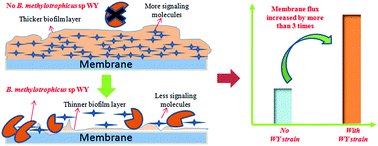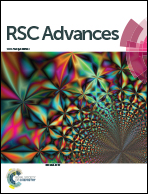Biofouling control in a membrane filtration system by a newly isolated novel quorum quenching bacterium, Bacillus methylotrophicus sp. WY
Abstract
During membrane processes of wastewater treatment, biofouling is a critical issue affecting membrane performance. Interspecies quorum quenching (QQ) by bacterial cells has been reported as a novel approach for mitigating the biofouling via restraining quorum sensing (QS), where secreted signaling molecules, e.g., acyl homoserine lactones (AHLs) being essential for biofilm formation are degraded by QQ bacteria. Herein, we isolated a novel indigenous QQ bacterium, Bacillus methylotrophicus strain WY from real wastewater sludge for controlling membrane biofouling. Strain WY was successfully characterized for QS and QQ activity and possessed a wide-ranging activity for degrading AHLs. More than 90% degradation for C8-HSL, C10-HSL, C12-HSL, C14-HSL, 3-oxo-C6HSL, 3-oxo-C8HSL and 3-oxo-C12HSL were achieved. Further, sodium alginate beads immobilized strain WY cells were applied to the microfiltration process. Compared to the vacant beads, using the beads with stain WY increased membrane flux by 3 to 4 times, demonstrating excellent biofouling control ability of strain WY.


 Please wait while we load your content...
Please wait while we load your content...